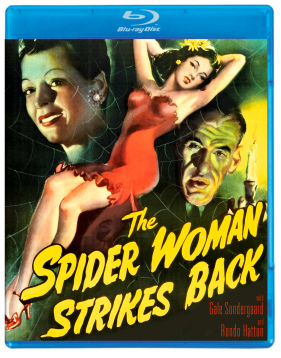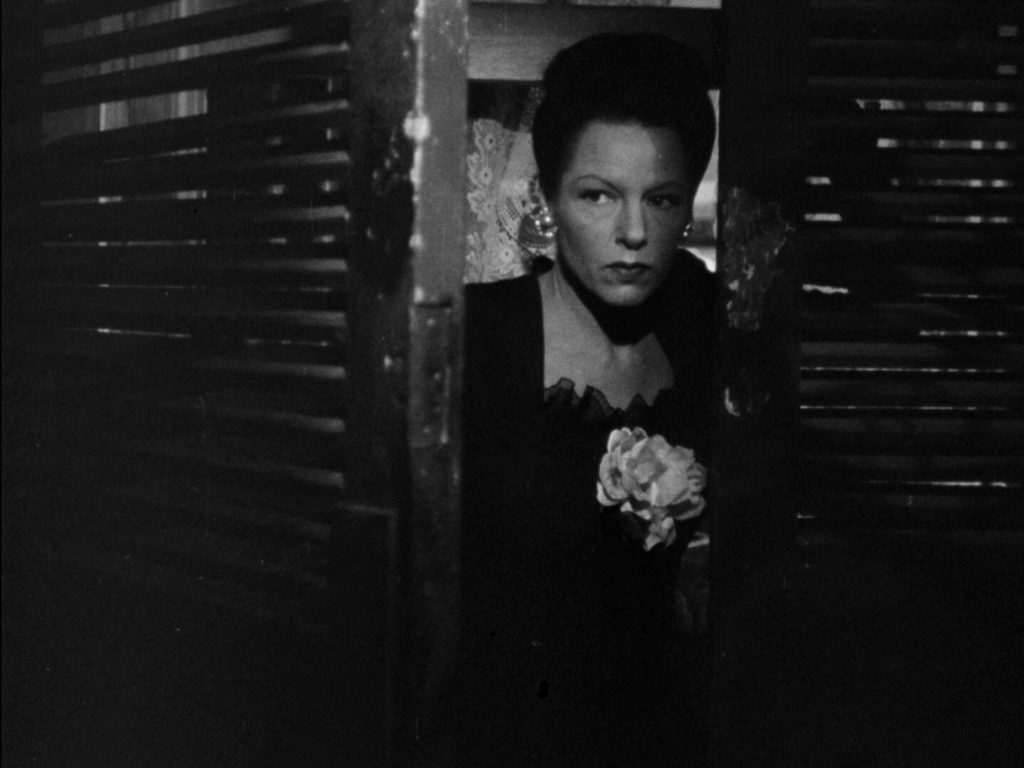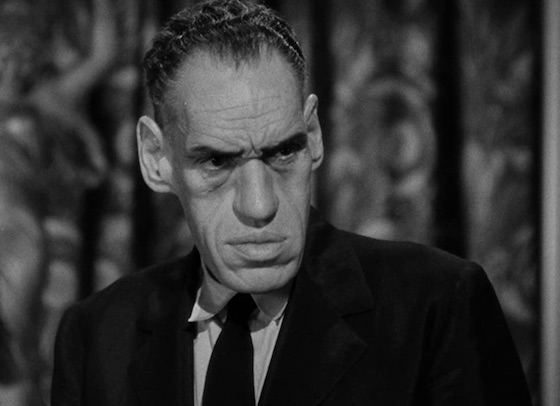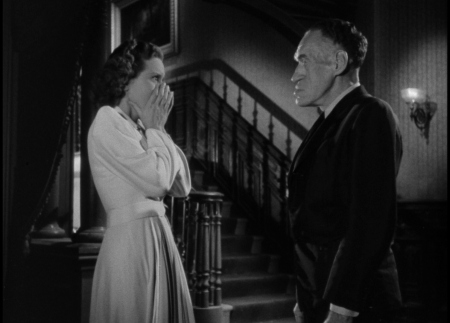The Spider Woman Weaves a Dull Web in This Abortative Franchise Starter
DIRECTED BY ARTHUR LUBIN / 1946
STREET DATE NOVEMBER 2, 2021
KINO LORBER STUDIO CLASSICS

“Dog’s got personality,” Jules explains to Vincent about his preference for dogs over pigs in the movie Pulp Fiction. “Personality goes a long way.” And so it is with movies. This is especially true for movies that have no budget for fancy costumes, sets, big stars, or armies of extras. All they can have is personality. It’s what separates dogs from pigs, and it’s what separates stylish classics like Jacques Tournier’s Cat People from movies like The Spider Woman Strikes Back.
The Spider Woman Strikes Back was a half-hearted attempt by Universal to launch a new horror franchise to take the place of their classic movie monsters, whose silver screen adventures were coming to an end by the late 1940s. As Dracula, Frankenstein, and the Wolfman were tangling with the likes of Abbott and Costello, the studio was casting about for their replacements, even as Universal saw that horror movies weren’t quite the draw they once were.
Enter the Spider Woman, and enter Gale Sondergaard, the actress fated to play her in two movies. Sondergaard first donned the role in 1943’s The Spider Woman (or Sherlock Holmes and the Spider Woman), where her character, named Adrea Spedding, matched wits with Basil Rathbone’s Holmes. Spedding was posited as the “female Moriarity,” but Holmes manages to foil her plot and she is arrested at the end of the film. Thus endeth the criminal career of The Spider Woman.
Sorta, kinda.
As mentioned earlier, Universal wanted to find replacements for their fading horror movie icons, and they thought that maybe they had one in this particular criminal mastermind. The fact that she was a woman made her all the more novel an idea. Furthermore, pairing her up with Universal’s other new monster on the block, Rondo Hatton, and you got yourself a franchise, baby!

The problem was, no one involved in the making of The Spider Woman Strikes Back had any love for the material, and that included the studio itself. As stated, by the mid to late 40’s, horror movies weren’t the box office draw they once were. Maybe audiences were no longer in the mood after the real life horrors of the second World War. In any event, there simply wasn’t any money in it. If Universal was going to do horror, it would do so on the quick and cheap. Furthermore, Sondergaard had no interest in being a horror movie star. She was nominated for two Academy Awards, and won for her role in Anthony Adverse (1936). Horror movies were a large step down from that. She was under contract with Universal, however, and therefore had no say in the matter. Neither did the movie’s director, Arthur Lubin, who was threatened with suspension from the Studio if he refused to direct.
So I’ve gone a long way into this review discussing the production at much greater length than the film itself. That’s because the story of the film’s production is much more interesting. The plot of The Spider Woman Strikes Back is… well, it’s a plot all right. Brenda Joyce plays Jean, a young woman who’s just been hired as a personal assistant to a wealthy blind woman named Zenobia Dollard (Sondergaard). Dollard has her monstrous servant, Mario (Rondo Hatton), slip Jean a little something extra in her milk at night, knocking her cold. Dollard and Mario then harvest some of Jean’s blood, feed it to a large carnivorous plant, which then produces large flowers that make a poison that Dollard uses to poison the area’s cattle so she can drive the ranchers off their land and buy up the property cheap. And spiders are involved somehow. Did I spoil too much of the movie for you, and now you have no interest in watching it? You’re welcome.

Writing it all out like that makes the movie sound more bonkers than it is. It’s all played pretty straight, which is to say, in the most boring way imaginable. There’s no energy or life, and the villain’s plan is little more than one step removed from your average episode of Scooby Doo. This is where my discussion about style comes into play. If, for example, Sondergaard’s performance was more arch, or if Lubin had put more verve into his lighting or camera work, it would have given Spider Woman a lift it so desperately needs. The aforementioned Cat People serves as an illustrative counter-example. Working with a similarly low budget and tight time constraints, Tournier nevertheless managed to craft an enduring classic.
The Spider Woman Strikes Back was made by people who didn’t want to make it, and it shows. Would the infusion of more style have made this a good movie? Probably not, but it would’ve gone a long way into making an entertaining one. And for a quickie studio programmer, that would’ve been more than enough.
While I can’t recommend The Spider Woman Strikes Back as a movie, I can certainly recommend Kino Lorber’s recent blu-ray release of the film. Tom Weaver’s audio commentary brings with it all the punch and personality the film lacks. He layers in audio clips and sound effects, making for an entertaining lesson on the history and context of the film’s production. The disc also includes a short featurette, The Mistress of Menace and Murder: Making The Spider Woman Strikes Back. There is also the usual collection of trailers.


